 For the circuit in the diagram, I observe that Vgs is around 3V and so is Vds on the breadboard. I do not understand if it is necessary to keep the drain at 1/2 of V1 as it is done when using a drain resistor? I am observing that the output is clipped for even around 6V p-p, there is another 10V to use. Basically not clear on how the current source works as a better drain resistor. Appreciate any help. Thanks
For the circuit in the diagram, I observe that Vgs is around 3V and so is Vds on the breadboard. I do not understand if it is necessary to keep the drain at 1/2 of V1 as it is done when using a drain resistor? I am observing that the output is clipped for even around 6V p-p, there is another 10V to use. Basically not clear on how the current source works as a better drain resistor. Appreciate any help. Thanks
Asked
Active
Viewed 77 times
0
-
If Vgs is around 3 volts then so will be Vds. And, a 6 volt p-p signal will "hit" the lower power rail and be observably distorted on the valleys of the sinewave. Try adding a 2 Mohm resistor to the above circuit from gate to source. – Andy aka Jan 11 '22 at 15:16
-
I did and that bumped up the drain voltage, thanks. But I am still unable to understand how the voltage at the drain will change since there is a constant drain current. So I am assuming that the only way for the Vds to change is if the resistance offered by mosfet changes, it that correct? – cd2021 Jan 12 '22 at 17:04
-
That is correct. – Andy aka Jan 12 '22 at 17:17
-
thanks for clarifying. – cd2021 Jan 12 '22 at 20:59
-
Has this answered your question @cd – Andy aka Jan 12 '22 at 21:02
-
Actually my original intention was to understand why current source is a better load than a resistor? thx – cd2021 Jan 13 '22 at 02:17
-
Actually my original intention was to understand why current source is a better load than a resistor? But I one more question is even if I increase the bias resistors to 10M each Vds is 7.3V, I don't "hear" any distortion though. Is this the right way to operate the current source loaded amplifier ie with Vds not be half of the supply voltage, in this case I have increased it to 30V. thx – cd2021 Jan 13 '22 at 04:08
-
For optimum operation (whether using a resistor or a current source), the quiescent voltage at the drain should be 50% of the full supply voltage. – Andy aka Jan 13 '22 at 08:05
-
I have tried increasing the bias resistors but Vds still shows 7.3V, how do we make it half the supply with constant current source? – cd2021 Jan 13 '22 at 23:19
-
You Al tern the ratio of those resistors. Try making the feedback resistor higher in value for instance. It's quite simple mathematically but, this is a side question that you need to resolve. – Andy aka Jan 13 '22 at 23:46
-
Yes I got Vds to half the supply voltage by increase the top bias resistor. Since the Id is fixed by the current source, Vgs always stayed constant no matter what the value of the lower resistor was, which fixed the current through it, so when I increased the top resistor, Vds went up. Thanks – cd2021 Jan 14 '22 at 04:04
-
What remains unanswered from your question other than current source vs resistor load? – Andy aka Jan 14 '22 at 08:49
-
Nothing, thanks – cd2021 Jan 14 '22 at 17:03
-
Do you want me to make a formal answer to your question? You are quite at liberty to make an answer yourself if you wish @cd. It might be better coming from you because clearly, along the way, you have figured out current source vs resistor on your own. – Andy aka Jan 14 '22 at 17:14
-
Ok here is my understanding - the constant current source has a very high resistance (ideally infinite) as only then can it keep its current constant for any other non-infinite load. Since the amplification of such common source amplifiers is gm times load resistance; this causes the gain of such amplifiers to be very high. Using a resistive load with such large resistance will cause a lot of power loss in form but with CC load the amp is more efficient. Please correct/add as needed. – cd2021 Jan 14 '22 at 23:52
-
That is correct. – Andy aka Jan 15 '22 at 09:37